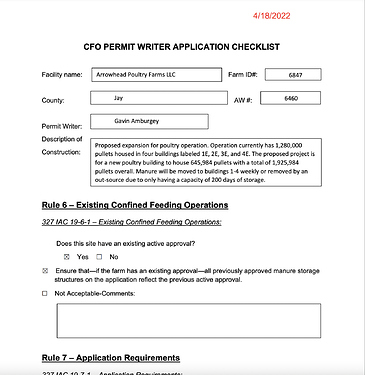NPDES stands for National Pollutant Discharge Elimination System, and it is a regulatory program implemented by the United States Environmental Protection Agency (EPA) to control water pollution. The NPDES program requires certain facilities, including concentrated animal feeding operations (CAFOs), to obtain permits for discharging pollutants into navigable waters.
CAFOs can generate significant amounts of animal waste, which, if not managed properly, can pose environmental risks to nearby water bodies.
Under the NPDES program, CAFOs are required to apply for and obtain a permit known as the NPDES permit. This permit establishes specific limits and guidelines for the CAFO’s waste management practices, aiming to minimize the discharge of pollutants into water bodies. The NPDES permit may include requirements related to manure storage, nutrient management, runoff control, mortality management and other pollution prevention measures.
The EPA implements and enforces the NPDES program for CAFOs. Its responsibilities include:
- Permitting: The EPA establishes the regulations and guidelines for NPDES permits and oversees the permit application process. The permits are issued by either the EPA or authorized state agencies, depending on the jurisdiction.
- Compliance Monitoring: The EPA conducts inspections and monitoring activities to ensure that CAFOs are complying with the terms and conditions of their NPDES permits. This includes checking for proper manure storage, runoff controls, and other pollution prevention practices.
- Enforcement: If a CAFO is found to be in violation of its NPDES permit or other environmental regulations, the EPA can take enforcement actions. This may involve issuing fines, requiring corrective actions, or even pursuing legal action against non-compliant CAFOs.
How can we utilize their resources?
Certain states have public portals where users can access documents from the processes listed above. Over time, we will compile a list below of states with public databases.
Here is an example of some of the information you can find in these reports:
This can be an extremely useful tool for finding the number of animals confined, future buildling plans, their reported plan for getting rid of dead bodies, etc.
Indiana
The Indiana Department of Environmental Management (IDEM) has a virtual filing cabinet where anyone can visit and find documents.
please assist us in adding to this list, research your state and leave what you found below.

